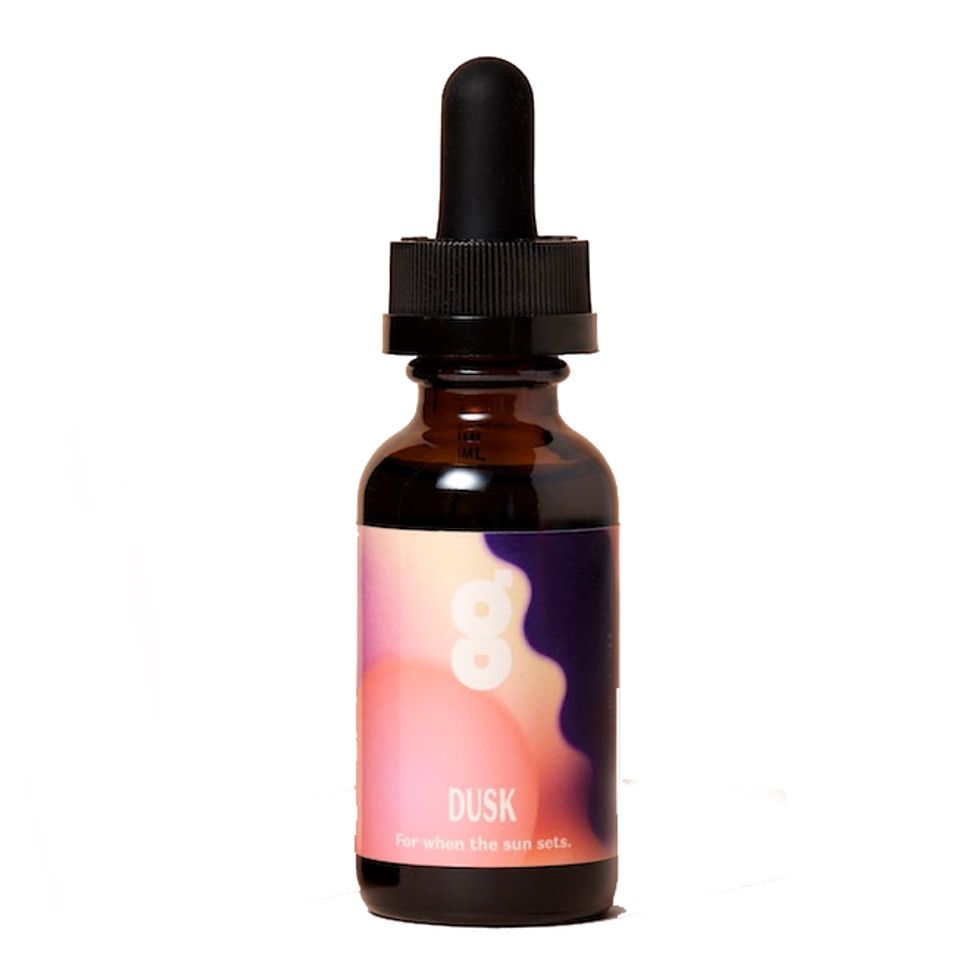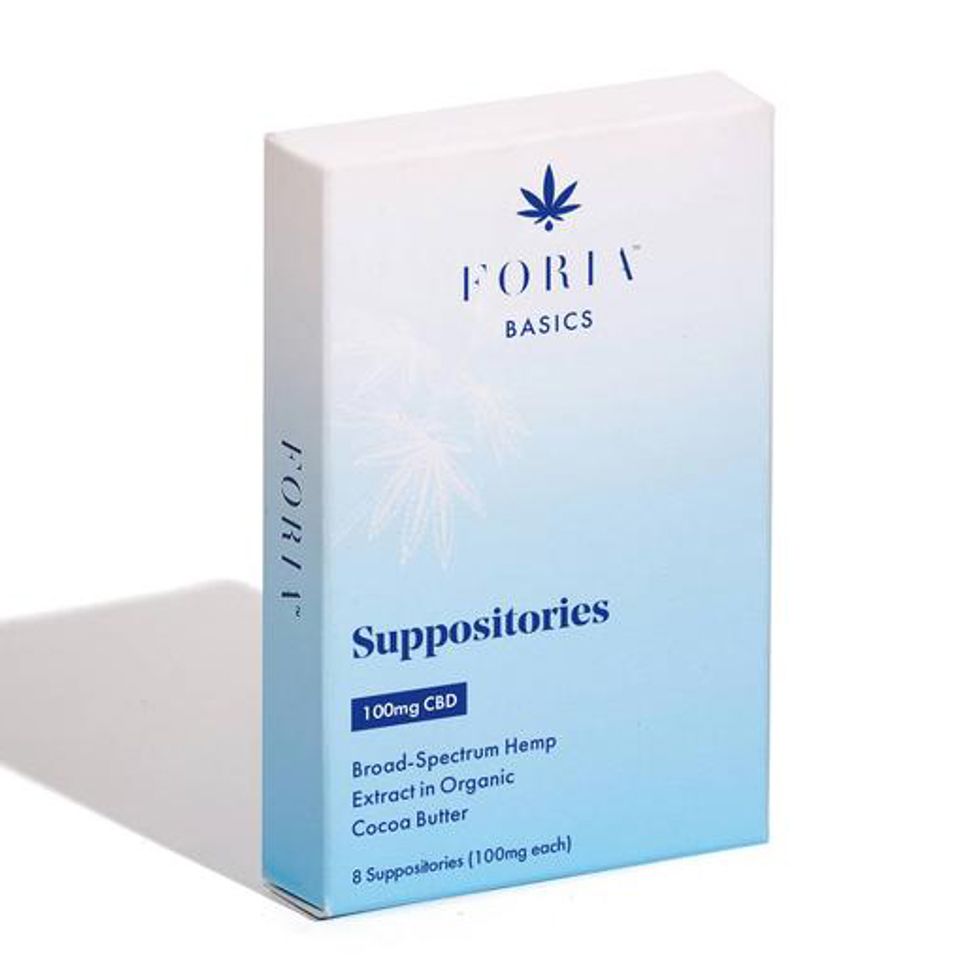How to Pick a Quality CBD Product
Everything you need to know, straight from a cannabis expert.

In the editorial world, we receive dozens of pitches on a near daily basis from brands claiming to have the best CBD products on the market. But formulating a quality tincture, gummy, or topical cream isn’t as easy as it may seem, and despite the public’s continued interest in exploring the world of cannabis products, there are still a lot of unknowns in the unregulated industry. Don’t worry, though—learning to spot an effective CBD product from its subpar competitors is totally doable. All you need is a little bit of background info on formulation and a few key words to look for when you’re comparing labels. Jenny Wichman, founder of Yew Yew, breaks it all down for us below (and shares a few of her must-have CBD items right now).
For the uninitiated, what are cannabinoids?
“Cannabinoids refer to the class of chemical compounds that interact with our endocannabinoid system (ECS). All humans and mammal animals have these ECS’ to regulate functions like managing moods, memory, appetite, and so much more. There are two types of cannabinoids—endocannabinoids (which our bodies create naturally), and phytocannabinoids (which are derived from cannabis and hemp, like CBD, THC, et cetera).”
What are the different types of cannabinoids out there available to consumers?
“[There are] three terms that describe CBD products: full spectrum, broad spectrum, and isolate. You have probably heard these terms, and while they sound like marketing buzzwords, they tell you critical information about the cannabinoids found in every CBD product.”
Full spectrum
“Also known as ‘whole-plant extract,’ [this] contains CBD plus everything else found in the plant. This includes flavinoids and terpenes, ingredients that bring added therapeutic effects, scent, and flavor. Plus, a wide assortment of cannabinoids, like CBD, low levels of THC (legal/no-high limit of 0.3 percent), and CBG, CBN, and more. All of the ingredients in full-spectrum products join forces and become more effective than if isolated. This term is called the ‘entourage effect.’”
Isolate
“This is pure CBD, which is produced by removing every other compound found in the plant. It’s usually an odorless, tasteless powder and with no THC. Isolates are heavily processed because it is difficult to strip away everything naturally occurring in hemp. Recent studies show that CBD isolate is only effective with a very specific dose that varies for each individual. Any amount under or over, and you hardly see effects. It’s likely if someone complains about taking CBD and feeling nothing, that it was a CBD isolate product.”
Broad Spectrum
“This CBD has no traces of THC, which are removed during the extraction process. It does retain other cannabinoids and terpenes, enhancing its therapeutic potential. For people who must avoid THC, broad-spectrum products are a useful option. However, full-spectrum is widely believed to be the most effective CBD extraction method.”
Are there any markers of an inferior CBD product that you can spot right away?
“Don’t get confused by hemp seed oil, which is harvested by cold-pressing hemp seeds and contains zero or trace amounts of CBD. It’s easy for a brand to add hemp seed oil to a product, throw marijuana leaves on the label, and trick customers into paying top dollar for a product with no CBD at all. While hemp seed oil is not CBD, it is great for skin. It doesn’t clog pores, moderates oil production, and is packed with vitamins.
“Be sure to read labels. CBD will usually be listed as cannabidiol, full-spectrum hemp, hemp oil, PCR (phytocannabinoid-rich), or PCR hemp extracts. Hemp seed oil will be listed as cannabis sativa seed oil. Also, every product should show their certificate of analysis. This shows all the cannabinoids and exactly how much is found in the product.
“I would avoid any CBD you can purchase at a bodega, gas station, or CVS. These products are usually packed with artificial flavoring and likely inferior CBD extract. Also, I see the CBD Shaman shops all over the United States, and besides their racist name, they label products as ‘Full Spectrum THC Free,’ which isn’t possible—full spectrum must contain low levels of THC. So definitely avoid that shop at all costs.”
What is the average shelf life of a CBD oil or gummy?
“CBD oil is very sensitive to direct sunlight and heat, so store it in a cool, dark place like in the cupboard or in the refrigerator. If you store it properly, it can last 1–2 years! That being said, CBD is meant to be used consistently to see the best effects. So use it when you need it, or even better, use it daily.”
How do you properly dose CBD?
“The proper dose of CBD depends on the ailment. For joints or muscle pain, it is best to apply CBD topically through a salve with at least 500 mg CBD per ounce. A dollop of that where you’re hurting can give fast relief.
“For stress or anxiety, smoking or vaping CBD is very effective. But in a time like this, we’ve got to preserve our lungs, so ingestible CBD oil is a great option. I recommend 10–15 mg of CBD dropped under your tongue *and* held for 30–60 seconds.
“If you’re having trouble sleeping, you could always increase your dose to 20–30 mg and look for CBD products focused on sleep.
“When it comes to CBD edibles, it has to process through your liver, which reduces the final amount of CBD absorbed in your body. When eating CBD you’ll likely have to increase or even double your regular dose.
“Usually, you’ll feel the stress- and pain-relieving effects of CBD within 45 minutes of your first dose. But CBD does build up in your system, so for best results (especially with anxiety relief), dose consistently, like daily.”
If you’re new to CBD, how should you approach your dosage compared to a pro?
“People always say, start low and go slow. If you’re new to CBD or cannabis, start with 5–10 mg, see how that feels, and increase the dose as needed!”
What are some of your favorite CBD brands at the moment?
“My own CBD line, which is full-spectrum (always!) and effective. I jokingly named it NBD CBD, but it is kind of a big deal. I worked with a local, FDA-certified manufacturer who sourced hemp that was grown organically in NY State on a small farm. Then we added a custom blend of terpenes (Limonene and Pinene) that give a natural citrusy and pine flavor.
“Terpenes give fruits and plants their scent [and] flavor and are known for their therapeutic effects, similar to essential oils. Limonene is believed to reduce stress and inflammation. Pinene is known to aid in alertness. Those terpenes make NBD CBD perfect for daytime use.
“If you’re open to vaping, Quill makes an amazing full-spectrum pen. If you need help with sleep, look no further than CBD tincture Dusk. Oh, and for cramps, a CBD suppository works wonders! I swear by Foria’s basics suppositories.”
“I’m passionate about CBD products because they help me out so much on a daily basis. I take my NBD CBD tincture daily to help relieve stress, especially in the time of COVID-19. I’ve been pairing CBD with my THC to help mitigate any smoking-induced anxiety. Also, I see how much it helps others find relief. My dad uses CBD on his knees for pain, my friend uses it for her migraines, my partner smokes it in place of cigarettes. There is such a wide range of benefits all from one plant.”
Want more stories like this?
12 Powerful Women Who Are at the Forefront of the Cannabis Industry
How to Turn Your Cannabis Habit Into a Successful Lifestyle Brand
What Happened When I Went to a Secret Cannabis Supper Club




